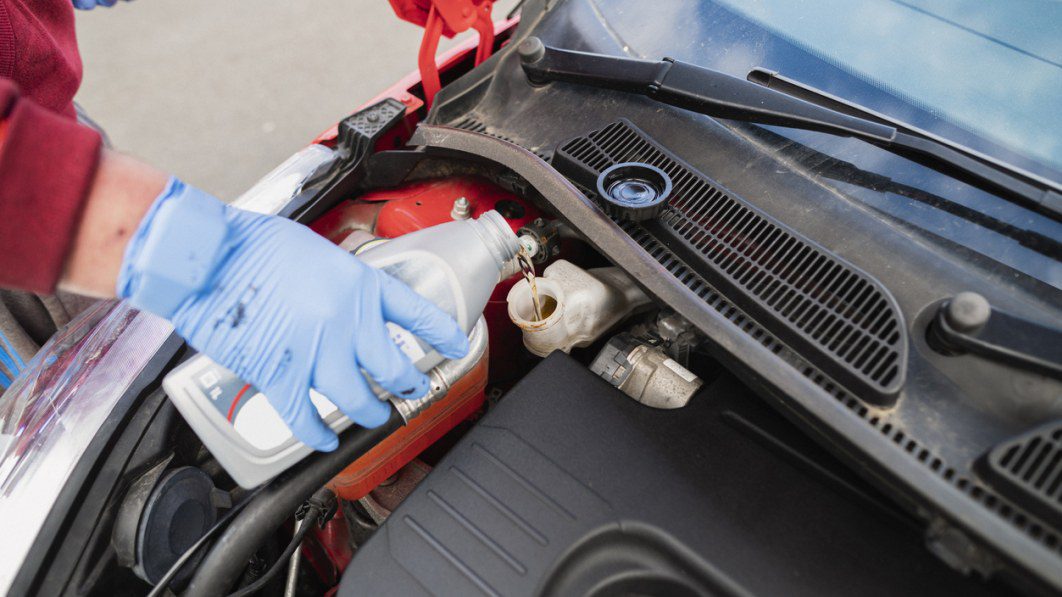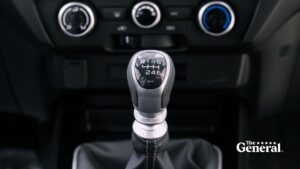Keep Your Car’s Brakes Working Optimally With the Best Brake Fluids

Autoblog is not affiliated with the brands featured in our articles, but when you make a purchase through links on our site we may earn a commission.
Improve your driving experience with the leading brake fluids in 2022 that help your car’s brakes continue working effectively and efficiently. The saying “better safe than sorry” always rings true, especially in the case of our rides. Brakes are an essential component in every vehicle. And brake fluid is like their lifeblood. Changing it every year or two will save you a ton of headaches, and it may even prevent an accident! Confused? Well, we’ve made this guide that will tell you all about the finest brake fluids in 2022 and how to buy this essential hydraulic fluid for your car.
Brake fluid is a chemical solution that most modern vehicles use in their braking systems. These vehicles can range from cars and motorbikes to trucks and even lorries. You see, it would take a lot more to stop your vehicle than just your foot on the brake pedal if it wasn’t for this liquid. But brake fluid can get old and dirty over time, just like your car’s oil.
When it does get old and yucky, a lot of problems start to come up. For instance, your brakes may feel mushy or your car may start to take longer to come to a complete stop. This can be pretty annoying and even downright dangerous. So, you should be replacing the brake fluid in your car or motorbike regularly.
What are the leading brake fluids of 2022?
Prestone Brake Fluid: Recommended
Buy on Amazon
First up is this brake fluid bottle by Prestone, which you can get in 12 ounce and 32 ounce variations. You can also opt for a six-pack bundle if you want to stock up or have multiple cars to fill up. This pick features a mix of polyglycol. The Prestone brake fluid will last you a long while, thanks to its fluid life of 50,000 miles. It also features corrosion protection to safeguard the metal component in your car’s braking system against corrosion. This product is compatible with all vehicles requiring DOT 3 fluid. The higher than average dry boiling point and long fluid life have earned this pick the first spot on our list.
Pros
Has a high dry boiling point of 460°F
Features a fluid life of 50,000 miles
Cons
Packaging could be better
Bosch Brake Fluid: Universally compatible

Buy on Amazon
Next, we have this brake fluid by Bosch, which is universally compatible since it can be used to replace any DOT 5.1, DOT 4, or DOT 3 brake fluid. This pick has a dry boiling point of 520°F and a wet boiling point of 360°F. The high boiling point provides longer fluid life, giving you good value for your money. Unlike most other options, you don’t have to change this brake fluid for up to three years. Additionally, this pick features excellent lubricity to help reduce the noise from your car and prevent the wear of brake system components. This option comes with 32 ounces of brake fluid in a metal bottle which helps prevent any leaks or contamination during shipping.
Pros
It is universally compatible since it exceeds DOT standards
Only needs to be replaced every three years
Cons
Lucas Oil Brake Fluid: Best for mixing
Buy on Amazon
This 12-ounce brake fluid bottle is one of the best brake fluids available on the market, and for good reason. It is made using a blend of polyethylene glycol ether and some additives, which allows it to meet the DOT 4 industrial standards. This pick is also compatible with other brake fluids allowing you to mix and match if needed. Additionally, it features protection against corrosion and rust to keep your car’s braking system in optimal shape. This product also works well with all the rubber components in your system, preventing them from degrading. You can use it with any compatible disc, drum, or clutch brake system. You also get protection against seal hardening and softening with this brake fluid, providing an overall better driving experience.
Pros
Prevents corrosion and rust
Can be used with other brake fluids
Cons
Could benefit from more bottle size options
Castrol Brake Fluid: Best for racing vehicles
Castrol has brought us this amazing brake fluid that exceeds the specifications of both DOT 3 and DOT 4. It has a wet boiling point of 518° F and a dry boiling point of 590° F, providing good fluid life. Thanks to its superior braking capabilities, this pick is great for racing and rallying vehicles. You can also get this brake fluid in a 12-bottle pack if you want to buy it in bulk. Each bottle contains 33.8 ounces of brake fluid which is generous for the price. Speaking of the bottle, it’s excellently designed to make it as convenient as possible to pour the oil without making a mess.
Pros
Two buying options: 1-bottle pack and 12-bottle pack
A great option for rallying and racing vehicles
Meets the specifications of DOT 3 and DOT 4
Cons
It only comes in one bottle size
Genuine Honda Brake Fluid: Great value
Honda has been around since 1948, and it is safe to say this brand is one that most have grown to know and trust. This option of theirs features two bottles of high-quality brake fluid which will keep your car’s brakes as responsive as possible. Each of these bottles contains 12 ounces of brake fluid. So, as per some quick math, you’ll get 24 ounces of high-quality braking fluid in this pack. This pick can be used with DOT 3 brake fluids compatible cars. The bottles this product comes in are of a familiar shape and easy to use. They are also excellent for storing the leftover brake fluid.
Pros
Pack of two bottles
Meets DOT 3 specifications
Specially made for Honda vehicles
Cons
No option for getting just one bottle
Buying Guide: Brake Fluids
You must consider various factors before buying a new braking fluid for your car. Luckily, we researched for you and put together this guide:
Breaking Down the Technical Terms Related to Brake Fluids
First thing’s first, let’s explain the meanings of some of the technical terms you will come across when shopping for brake fluids:
DOT ratings
You will come across DOT ratings a lot when looking for brake fluids. A DOT rating is given to a brake fluid based on its wet and dry boiling points. These ratings must be kept in mind since they determine whether a brake fluid meets the required minimum performance criteria or not. Generally, the higher the DOT rating and boiling points are, the better fluid life and performance you get.
The four most common ratings are DOT 3, DOT 4, DOT 5, and DOT 5.1 brake fluid. DOT 3, DOT 4, and DOT 5.1 are all non-silicone-based brake fluid types. These three DOT-rated brake fluids are the ones that most modern cars use. DOT 5, on the other hand, is silicone-based and is not commonly used in regular cars.
Fluid life
Fluid life is another commonly used term in the world of brake fluids. As its name suggests, this number represents how long your brake fluid will last you before it needs to be replaced. The fluid life is usually stated in miles, such as 40,000 miles or 50,000 miles.
Some brands may also just tell you how many years you should use their brake fluid before replacing it — kinda like an expiry date. You’ll usually find these numbers on the label of the fluid container.
What to Look for When Buying Brake Fluids?
Here are some things to look out for when shopping for brake fluid to help you get a great deal:
Compatibility
You should only use a compatible DOT-rated brake fluid with your vehicle. This is because using a brake fluid with an incompatible DOT rating can cause serious harm to your vehicle’s brake system.
It may even make your car’s brakes less effective. You can check the compatible DOT ratings of your car or motorbike by going through its handbook. You may also consult your mechanic or the guy over at the local DMV.
Bottle size
Next, you should also consider the bottle size when buying brake fluid for your vehicle. It is no fun having to order more later because you didn’t get enough the first time around. So, check your vehicle’s handbook to determine how much brake fluid it will need and get the recommended amount. You can also buy extra if you’d like to have some in your spare storage.
How We Choose the Top Brake Fluids?
To ensure that you get the best possible brake fluid for your vehicle, here are some things we took into account when choosing our top picks:
Easy storage
All the brake fluids we chose are super easy to store. The bottles they come in have a compact shape and are easily stackable in a box. You just need to close their lid tightly, and you are good to go. Oh, by the way, since we’re on the topic of storage, always remember to store brake fluids in a dry place since they absorb moisture crazy fast.
We also ensured that the bottles we chose provided a spill-free pouring experience, so the chances of a spill happening are minimized. You can read the product reviews to get a better idea of how easy it is to store your braking fluid.
High boiling points
A higher wet and dry boiling point means you get better fluid life and performance. This is why the brake fluids we chose had higher boiling points than the minimum that their DOT ratings require. This ensures good quality and longer fluid life. You can usually find the boiling points of brake fluid on the bottle’s label or the product description.
What to Keep In Mind When Changing the Brake Fluid in Your Vehicle?
Although it is pretty easy to change the brake fluid in your vehicle, there are still some things to keep in mind to make the process smoother and hazard-free:
Reduce exposure to air
The less exposure to the air your brake fluid has, the longer it will last you. So, it is best to minimize this exposure by working quickly and putting the lid on the fluid container once you are done. Also, double-check the lid is closed properly before chucking the container into the storage.
Prevent spillage on your vehicle’s body
Brake fluids tend to be pretty corrosive. This is why you should avoid spilling it on the body of your car or its engine. If a spill does happen, wipe the liquid away quickly. It is also a good idea to wear gloves when working with brake fluid to avoid exposure to your skin.
Brake Fluid FAQ’s
Let’s answer some brake fluid-related FAQs to address any questions you may still have:
Q: Can I mix brake fluids?
Whether or not you can mix brake fluids varies from product to product. You can check the directions on the label to ensure if it’s allowed or not. Keep in mind, however, to never combine a DOT 5.1 brake fluid with other types since it is not suitable for experimentation.
Q: When should I replace my car’s brake fluid?
You should replace your car’s brake fluid if you hear any weird sounds, get any burning smell, or feel like the brake is a bit mushy. You should also change the brake fluid once it is older than its recommended fluid life.
Q: How do I check my car’s brake fluid level?
You can easily check your car’s brake fluid level using the markings on the reservoir. Ensure the fluid level is within the minimum and maximum markings on the reservoir.







